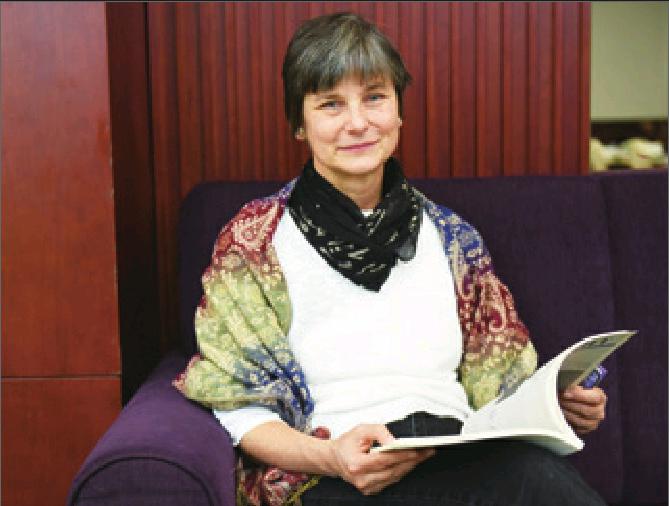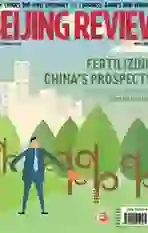Connecting Minds Through Literature
2016-01-21ByLiNan
By+Li+Nan

Does the term “Chinese spirit” embody patriotism, reform and innovation? That was one of the topics for a translation workshop held in Beijing in December 2015. Karen S. Kingsbury was wrestling with fellow elite translators from China, the United States, Britain and Mexico about the exact meaning of the Chinese phrase—zhongguo jingshen at the meeting. The results are still inconclusive.
The workshop, jointly hosted by the China International Publishing Group and the China Academy of Translation, aimed to tackle some of the most difficult problems in the translation of Chinese literary as well as non-literary works into English. Given the vast differences between the two languages and the cultures that they reflect, participants underlined the need to adopt a narrative style that makes these works more accessible to international readers.
Kingsbury is a key literary translator focusing on the eminent Chinese female writer Eileen Chang (1920-95). She is currently working on a critical biography of Chang to add to her other publications of the author, which include Love in a Fallen City and Half a Lifelong Romance. She is also a professor teaching courses in Asian studies and world literature at Pittsburghs Chatham University.
Kingsbury lived in Chongqing, a metropolis in southwest China, from 1983 to 1984 soon after she graduated from college. The experience was so transformative that Kingsbury could not forget China even after she went back home. As an English major, she decided to pursue further studies in Chinese literature and look for excellent Chinese literary voices that she could turn into English. She believes that the translation of literature is a way in which minds can be connected across international borders, laying the foundation for wider communication between China and the United States.
Influenced by her teacher C. T. Hsia, a renowned Chinese literary critic at Columbia University, Kingsbury has an academic inclination to Chinas modern writers, particularly Chang. When first reading Love in a Fallen City in 1990, Kingsbury, having poor Chinese at that time, had a kind of spiritual experience. “I could feel for the story even when I was struggling with the language,” Kingsbury recalled.
She believes that the literary piece has the power to draw people into it, even if they may encounter language barriers. “I wanted to read Eileen Chang so much that I was determined to learn more Chinese,” Kingsbury said.
Her translation of the novella was first published in Hong Kong in 1996, one year after Chang passed away. Kingsbury published a collection of Changs works under the same title in 2007, including Sealed Off, her debut translation.
Finding harmony
“Changes and recreations are unavoidable in translations—finding the equivalent [expression in another language] is an art,” said Kingsbury when asked whether translations should follow the source text exactly. She believes that translating is basically a rewriting of the original text. Most readers in America expect highly polished, smooth, and readable English texts. However, following the exact details of the source text may result in awkward translations that few readers would feel comfortable buying.
When choosing the title for Half a Lifelong Romance, Kingsbury struggled with several words. “We decided on the word ‘romanceeven though that is not the exact meaning—we have to find something that captures the‘flavor of the passage for the English readers.”
Eric Abrahamsen, co-founder of Paperrepublic.org, a Beijing-based website facilitating literary and publishing connections between China and the rest of the world, echoed Kingsburys view. He said that what matters the most in literary translation is getting the tone right. It is therefore his belief that native English speakers with a good command of Chinese are more suitable for the job than Chinese translators.
Kingsbury, however, admits that a naturalized translation may, to some extent, result in cultural assimilation. But since few readers are willing to read awkward translations, translators must recreate the original to avoid bungling the text for readers.
But Kingsbury warns against casual rewriting. “Each literary work tries to point us toward something that makes us think beyond the concrete world,” she said. Translators must find that essence in the source text and be cautious about editing it. Every change has to faithfully represent the spirit of the original. A translator should try to find not only a high-quality equivalent, but also a pattern of congruence between the two different cultures, Kingsbury added.
Reaching global audience
Kingsbury told Beijing Review that there are not enough Chinese-to-English literary translators who are native English speakers. According to her, literary translators in the United States can be roughly divided into three groups. The first group is that of the much respected “elders”—academically trained translators working on Chinese classics. The second group, mostly born in the mid-20th century, consists of scholars and people of different professions who became interested in China after China established diplomatic relationship with the United States in 1979. The third group is largely com- posed of poets enamored with Chinese poetry.
“Literary translation is not a financially feasible career in America,” said Kingsbury. In her opinion, its the key reason for the shortage of literary translators. The American literary market is already crowded with an eclectic range of topics and authors.
According to Kingsbury, American readers are less accustomed to international literature than their British peers. In addition, some SinoAmerican writers have drawn their Chinese experiences and culture into the American literary sphere. Consequently, few translations are profitable enough to support ones livelihood.“So a literary translator has to find other ways to earn a living,” said Kingsbury.
The second reason is that literary translation requires not only proficiency in two languages, but also a feeling for the voices and styles of various cultures literature, Kingsbury said. High requirements exclude many translators who are not oriented toward literature.
The good news is that the pool of literary translators is getting larger and translated literary publications are increasing. According to Paperrepublic.org, the number of Chinese-to-English literary translations published in the English world increased from 24 in 2012 to 44 in 2015. Some of the translations have won literary prizes in the United States. For example, The Three-Body Problem written by Liu Cixin and translated by Chinese American writer and translator Ken Liu, won the 2015 Hugo Awards, one of the most prestigious U.S. science fiction awards.
In order to further globalize Chinese literature, Kingsbury suggests that the content and style of Chinese literary works should be tailored for an international audience from a perspective that is rooted in Chinese experiences. Chinese writers who wish to reach international audiences should figure out what kind of international audience they want to reach and what those people want to read about. In a perfect world, she said, a writer should be able to visit a variety of places and stay long enough to know about the lives of their target audience.
“Literary translations are windows into Chinese culture. If what readers see in that window doesnt attract them, they wont go any further,” Kingsbury explained.
“Internationalized publishing and distribution channels are vital to the globalization of Chinese literature,” said Huang Youyi, Vice President of the China Academy of Translation. It is therefore imperative that Chinas publishers collaborate with their international counterparts, who are more familiar with the chosen target demographic, to present excellently translated literary works for international audiences.
